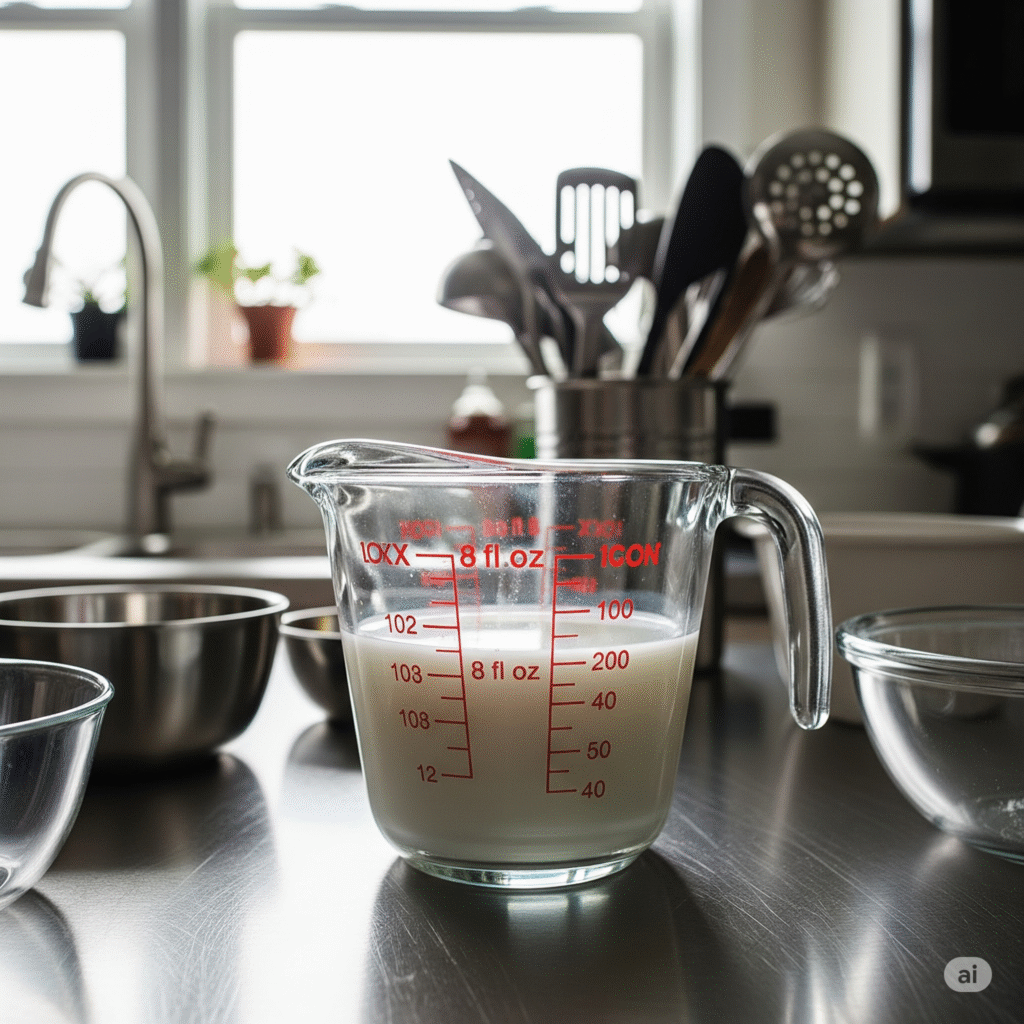Ever stared at a recipe, spoon in hand, and wondered: “Exactly how many ounces are in this cup?” You’re not alone! It’s one of the most frequently asked questions in kitchens everywhere, and for good reason. Measurement can get tricky, especially with different systems and ingredients involved.
At The Insight Stream, we’re here to clear up the confusion so you can cook and bake with confidence! Let’s get to the bottom of it.
The Quick & Most Common Answer: 8 Fluid Ounces
For liquid ingredients (like water, milk, oil, broth, or juice) when using U.S. customary measurements, the answer is straightforward:
1 standard U.S. liquid cup = 8 fluid ounces (fl oz)
This is the golden rule you’ll use most often for beverages and liquid recipe components.
The Crucial Distinction: Fluid Ounces vs. Dry Ounces (and Why It Matters!)
Here’s where a common misconception arises. While we just established that 1 cup holds 8 fluid ounces of liquid, you cannot simply say “1 cup of flour weighs 8 dry ounces.”
- Fluid Ounces (fl oz): This is a measure of volume. It refers to how much space a liquid takes up. This is consistent – 8 fluid ounces of any liquid will always occupy the same volume.
- Dry Ounces (oz): This is a measure of weight. It refers to how heavy an ingredient is. This varies wildly depending on the ingredient. Think about it: a cup of feathers weighs significantly less than a cup of rocks, even though they both fill “one cup” of volume.
So, while a cup holds 8 fluid ounces by volume, a cup of flour might weigh around 4.5 dry ounces, a cup of sugar closer to 7 dry ounces, and a cup of chocolate chips might be around 6 dry ounces.
Therefore, when a recipe asks for “ounces in a cup,” it almost always refers to fluid ounces for liquids. If a recipe calls for dry ingredients in “ounces,” it’s typically referring to weight, and you’ll need a kitchen scale for accuracy.
Common Liquid Conversions (U.S. Customary)
To help you out in the kitchen, here’s a handy chart for common liquid measurements:
| Measurement | Fluid Ounces (fl oz) |
|---|---|
| 1/4 cup | 2 fl oz |
| 1/2 cup | 4 fl oz |
| 3/4 cup | 6 fl oz |
| 1 cup | 8 fl oz |
| 1 pint (2 cups) | 16 fl oz |
| 1 quart (4 cups) | 32 fl oz |
| 1 gallon (16 cups) | 128 fl oz |
Why All the Confusion? A Quick Peek at Measurement Systems
The primary reason for this common confusion lies in the different measurement systems used around the world:
- U.S. Customary System: This is what most American recipes use, where 1 cup = 8 fl oz.
- Imperial System (U.K. & Commonwealth Countries): Historically, a U.K. cup was larger, roughly 9.61 fl oz. However, modern U.K. recipes often use metric (milliliters).
- Metric System (Most of the World): This system uses liters (L) and milliliters (mL), which are measures of volume. 1 liter = 1000 mL. Since 1 cup (U.S.) is approximately 236.59 mL, metric recipes usually list ingredients directly in mL or grams (for weight).
The interplay between volume (cups, fluid ounces) and weight (dry ounces, grams) across these systems is what often trips people up.
Tips for Kitchen Success & Measurement Accuracy
- Use the Right Measuring Tools:
- For Liquids: Use clear glass or plastic measuring cups with a spout, designed for liquids. Place them on a flat surface and read at eye level.
- For Dry Ingredients (by volume): Use measuring cups that you can level off with a straight edge (like a knife or spatula).
- For Dry Ingredients (by weight): Invest in a digital kitchen scale. This is especially crucial for baking, where precision matters a lot (e.g., with flour).
- Read Recipes Carefully: Always pay attention to whether a recipe specifies “fluid ounces” or just “ounces.” If it’s just “ounces” for a dry ingredient, assume it means weight and use a scale.
- When in Doubt, Look It Up! Don’t guess. A quick search (or checking a reliable conversion chart like ours!) can save your dish.
Cook & Bake with Confidence!
Knowing the difference between fluid ounces and dry ounces, and having these simple conversions at your fingertips, will make you a much more confident cook and baker. No more guessing, just delicious results!
So, the next time you ask “How many ounces in a cup?”, you’ll confidently answer: “8 fluid ounces!” Happy cooking!



Some really interesting info , well written and broadly user genial.
Some truly interesting points you have written.Assisted me a lot, just what I was searching for : D.
I have been surfing on-line greater than three hours lately, yet I by no means found any fascinating article like yours. It’s pretty value enough for me. In my view, if all website owners and bloggers made excellent content material as you probably did, the internet will probably be a lot more useful than ever before. “Perfection of moral virtue does not wholly take away the passions, but regulates them.” by Saint Thomas Aquinas.
Hello. remarkable job. I did not imagine this. This is a fantastic story. Thanks!
Heya i am for the primary time here. I came across this board and I find It really useful & it helped me out much. I am hoping to provide one thing back and aid others such as you aided me.
In this grand scheme of things you receive an A+ for effort and hard work. Where exactly you actually confused everybody was first on the particulars. You know, as the maxim goes, the devil is in the details… And it couldn’t be more true at this point. Having said that, let me reveal to you what exactly did deliver the results. Your writing is actually incredibly engaging and that is most likely the reason why I am taking the effort in order to comment. I do not really make it a regular habit of doing that. Second, even though I can easily notice a leaps in logic you come up with, I am definitely not sure of just how you appear to unite your points that make the actual final result. For right now I will yield to your position however wish in the foreseeable future you actually link your facts better.